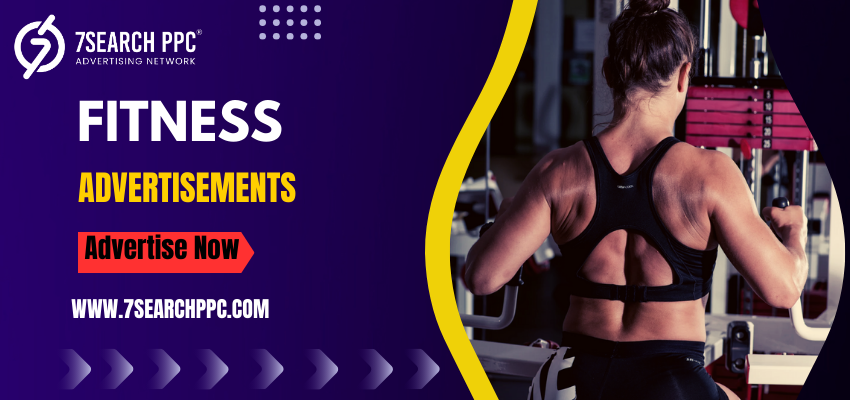7 Must-Know Tips for Fitness Advertisements That Drive Results
In a world where health consciousness is rapidly rising, fitness advertisements play a crucial role in attracting and retaining health-focused consumers. Whether it’s a local gym, a personal trainer, a supplement brand, or a digital fitness app, crafting compelling health and fitness ads can set you apart in an ever-competitive market.
This blog explores 7 must-know tips for fitness advertisements that will help you design campaigns that resonate with your target audience, drive engagement, and ultimately boost conversions. Whether you’re new to fitness advertising or looking to refine your current strategy, these tips will provide actionable insights you can implement right away.

Know Your Audience Inside Out
The first step in creating effective fitness advertisements is understanding your audience. Are they gym-goers, yoga enthusiasts, runners, or people trying to start their fitness journey?
Tips:
Create audience personas with details like age, gender, goals, fitness level, and preferred platforms.
Use tools like Google Analytics, Facebook Audience Insights, and customer surveys to gather data.
Tailor your messaging to different segments. For example, a weight loss campaign for new moms will differ from one targeting bodybuilders.
Knowing your audience ensures your ads are relevant, empathetic, and motivational, increasing the likelihood of action.
Use Strong Visuals That Inspire
Fitness is inherently visual. People want to see transformation, intensity, energy, and results. That’s why eye-catching visuals are a non-negotiable part of successful fitness advertising.
Tips:
Use high-quality images and videos showing real people (or influencers) working out or achieving results.
Incorporate before-and-after photos with permission.
Show diversity in body types, ethnicities, and fitness levels to make your health and fitness ads more inclusive.
Visuals should evoke emotions—pride, motivation, empowerment. If viewers can see themselves in your ads, they’re more likely to convert.
Create Compelling, Benefit-Driven Copy
Copywriting in fitness advertising should go beyond generic phrases like “Get Fit Today.” Speak to pain points and outcomes.
Tips:
Use benefit-driven language: “Lose 10 pounds in 6 weeks,” “Build lean muscle without heavy lifting,” “Feel confident in your skin.”
Add a sense of urgency: “Limited-time trial,” “Offer ends soon.”
Include testimonials or short success stories to build credibility.
Your copy should promise a solution, not just promote a product. Think transformation, not transaction.
Leverage Social Proof and Testimonials
Nothing builds trust faster in fitness ads than hearing about someone else’s success. Real stories resonate, and social proof turns skepticism into belief.
Tips:
Highlight client transformations with their consent.
Use user-generated content: videos of clients working out, sharing progress, or talking about your brand.
Feature reviews and ratings from platforms like Google, Yelp, or Facebook.
Authentic voices from your community will do more for your fitness advertising than even the most polished ad.
Choose the Right Platforms for Distribution
Where you advertise is just as important as what you advertise. Knowing where your audience spends their time ensures your message reaches the right people.
Get More Clicks with Smarter Ads—Join Us!
Tips:
Use Instagram and TikTok for engaging short-form content that shows workouts or fitness tips.
Try Facebook and YouTube for longer content or testimonial videos.
Consider Google Display Network and 7Search PPC for targeted fitness ads to drive website traffic or app installs.
Mix and match based on campaign goals—brand awareness, lead generation, or product sales.

Incorporate Calls-to-Action That Convert
A strong Call-to-Action (CTA) guides users on what to do next—without one, your ad is just passive content.
Tips:
Use clear, action-driven CTAs like “Start Your Free Trial,” “Join the 30-Day Challenge,” or “Download Our App.”
Place CTAs prominently—on buttons, headlines, or even at the end of testimonial videos.
A/B test different CTAs to see what drives the highest engagement.
Your CTA should match your campaign’s goal and align with your audience’s stage in the funnel.
Track Performance and Optimize Regularly
Great fitness advertisements are never a set-it-and-forget-it deal. Regular analysis and optimization are key to long-term success.
Tips:
Monitor metrics like CTR, conversion rate, engagement rate, and cost-per-acquisition.
Use tools like Google Ads, Meta Ads Manager, or platforms like 7Search PPC for performance analytics.
Run A/B tests on ad creatives, headlines, and CTAs to see what resonates most.
Use the data to tweak your messaging, reallocate budget, or shift targeting. Smart fitness advertising evolves with the market and consumer behavior.
Conclusion
Effective fitness advertisements require more than just flashy visuals and catchy slogans. They demand strategy, audience understanding, consistent testing, and powerful storytelling. Whether you’re promoting a personal training program, fitness gear, or a workout app, applying these seven tips will help you create compelling health and fitness ads that connect, convert, and grow your business.
In the ever-evolving world of fitness advertising, staying relevant means adapting to trends, leveraging social proof, and always putting the user’s needs front and center. Start implementing these strategies today and watch your campaigns flex stronger results.
FAQs About Fitness Advertisements
What platforms are best for fitness advertisements?
Ans. Instagram, TikTok, Facebook, YouTube, and PPC platforms like Google Ads or 7Search PPC are highly effective, depending on your target audience.
How can I make my fitness ads more engaging?
Ans. Use authentic visuals, tell transformation stories, include social proof, and write copy that focuses on outcomes rather than features.
What is a good conversion rate for fitness ads?
Ans. It varies by industry and platform, but a conversion rate between 2% and 5% is considered average. Continuous testing and optimization can improve results.
Should I hire a fitness influencer for my campaign?
Ans. Yes, if your budget allows. Micro or macro fitness influencers can help build trust and boost engagement through relatability and established audiences.
Are video ads better than image ads for fitness products?
Ans. Generally, yes. Videos tend to perform better as they demonstrate workouts, transformations, and energy, crucial elements of the fitness journey.
